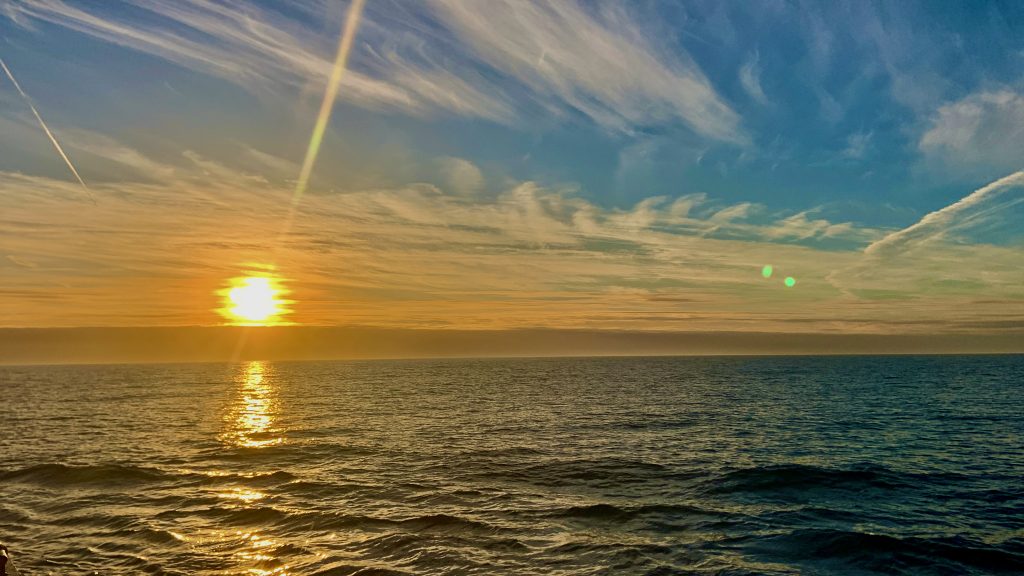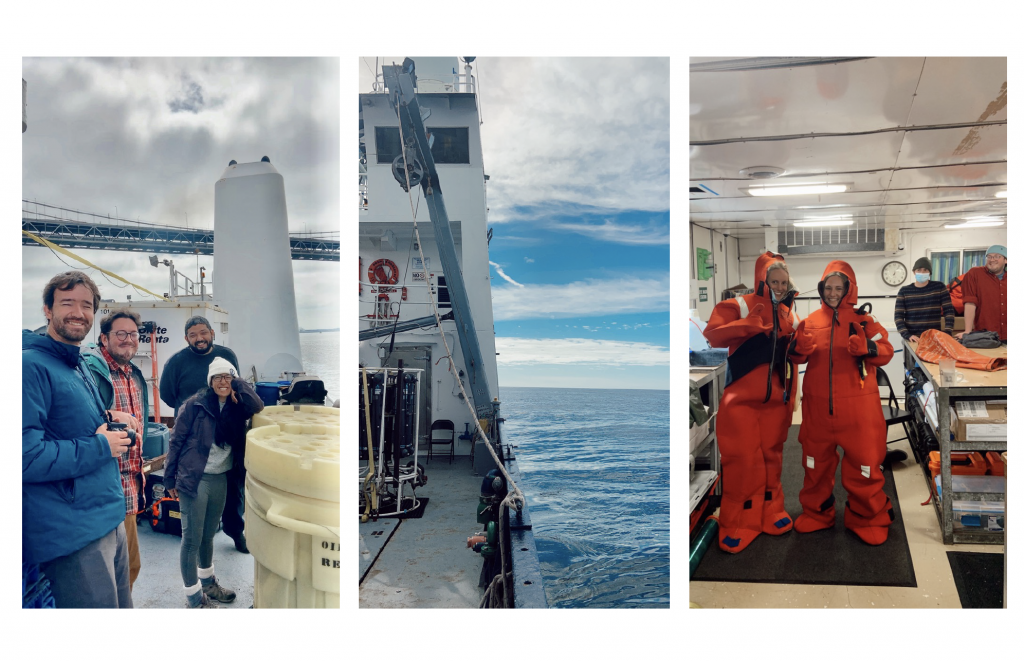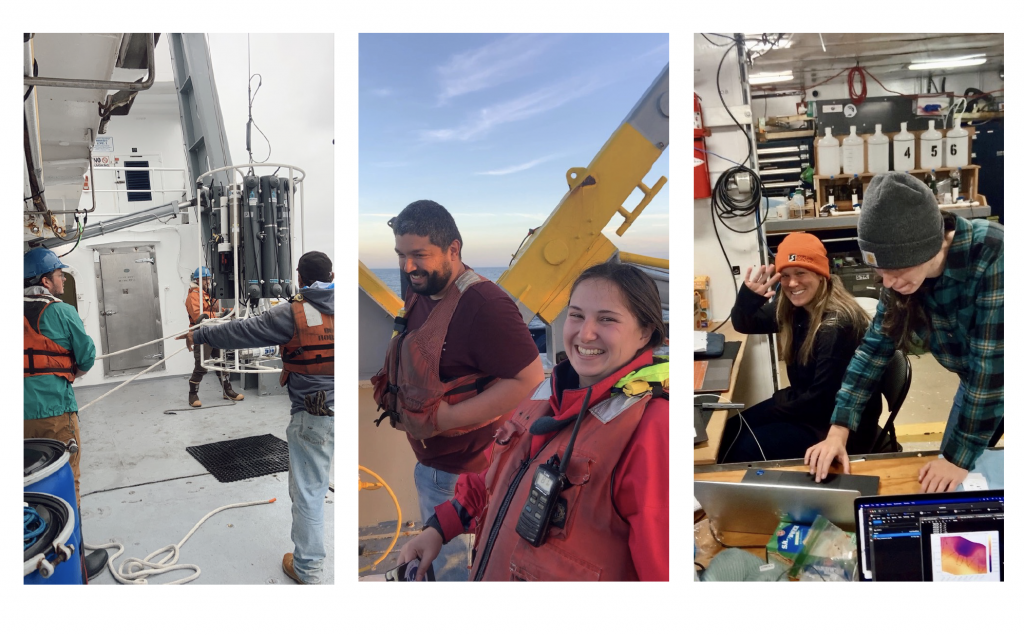By Sarah Lang, Ph.D. student at the Graduate School of Oceanography, University of Rhode Island. // Aboard the Bold Horizon //
Going to sea for the first time as part of NASA’s S-MODE mission has been an experience like no other. You establish a new normal on the boat and quickly fall into new routines. Perceptions of time even change! I joked with some people on the boat that time is but a label on our samples. Perhaps that’s a bit dramatic, but normal perceptions of time do not apply at sea –especially if you start your day at 2 pm and finish at 2 am.
For me, time flies the fastest when Pat Kelly and I are taking biological samples for long periods of time, looping through our collaborative Spotify playlist titled “boat songs.” With Talking Heads, Madonna, Mötley Cru, and Fleetwood Mac, we have quite the mix. Pat rolls his eyes any time one of my disco songs comes on, but I know he secretly loves it.

For those on the night shift, their work day doesn’t begin until 4 pm in the afternoon and doesn’t end until 4 am. They have lunch in the middle of the night! And a cup of joe with “breakfast” at the same time those on land are getting home from work.
Most people have the day shift (0400 – 1600) or the night shift (1600 – 0400). A few of us on the biology team have schedules that change all the time, so I get to experience a bit of both.
The day shift is nice because that’s when most meals are served, and if you keep your eyes peeled you might see dolphins, sea lions, or whales. The night shift has its perks too. Typically, there is a movie playing in the lounge for those on break. It’s a bit quieter on the boat, except when we’re laughing at Flight of the Conchords or dancing on the back deck during EcoCTD shifts (an EcoCTD is a vertical profiler measuring physical and biological variables). We’ve only had one day of (semi) clear skies, so nights on the water have been especially dark. Beyond the light of the boat, it’s pure darkness. No light from land in sight.

Now onto the science!
We are here to study submesoscale (small! 1-10 km) dynamics in the ocean, which are associated with significant vertical velocities. We care about how climate-relevant parameters like heat and carbon are taken up by the ocean and what happens to them once they are in the ocean. Submesoscale features change really fast, which makes them very difficult to study. In this campaign, we are studying these features with autonomous vehicles (like Saildrones and Wave gliders), Lagrangian floats (which move with the water), airplanes, and of course, the ship. We’ll need all the data we can get to understand these complicated and quickly-changing processes!

Many of us on the biology team are interested in how these small–scale processes structure phytoplankton communities. Phytoplankton are microscopic organisms that undergo photosynthesis, taking up carbon from the ocean and producing much of the oxygen we breathe. They are the base of the marine food web, so if you like fish and dolphins and other sea creatures, you like phytoplankton! It’s important to know the controls on the distributions of phytoplankton species. Complex ecological interactions in the ocean are important to the ocean’s carbon cycle, and therefore, Earth’s climate system.
“Ocean color” is a key piece to this puzzle. We use light to study the biogeochemistry of the ocean. Light interacts with water and the “stuff” that’s in the water (like phytoplankton!). We can quantify these interactions with optical measurements to understand more about the biogeochemistry of the ocean. This is also how we can study the biology of the ocean from space.
In my next blog post, I’ll talk about how we use seawater samples to validate optical measurements, and how we use these optical measurements to understand measurements taken by hyperspectral sensors on airplanes (and eventually in space by NASA’s PACE mission!).
